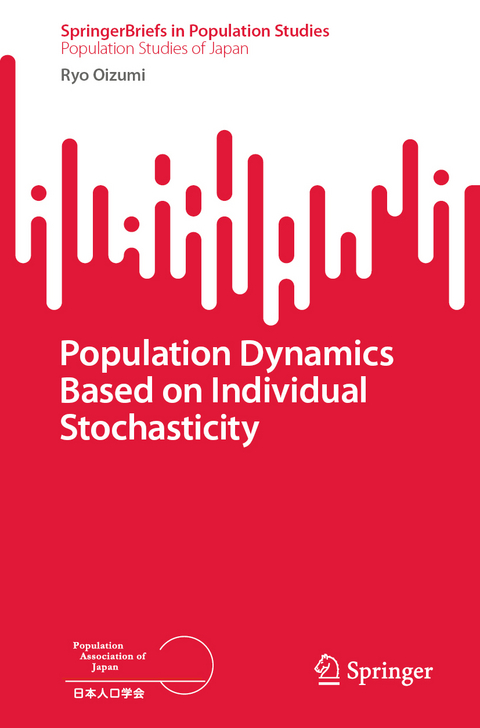
Population Dynamics Based on Individual Stochasticity
Seiten
2022
|
1st ed. 2022
Springer Verlag, Singapore
978-981-19-3547-3 (ISBN)
Springer Verlag, Singapore
978-981-19-3547-3 (ISBN)
This book demonstrates that population structure and dynamics can be reconstructed by stochastic analysis. The diffusion process generated by stochastic differential equations provides statistics determining population dynamics, i.e., heterogeneity is incorporated in population dynamics as its statistics.
This book demonstrates that population structure and dynamics can be reconstructed by stochastic analysis. Population projection is usually based on age-structured population models. These models consist of age-dependent fertility and mortality, whereas birth and death processes generally arise from states of individuals. For example, a number of seeds are proportional to tree size, and amount of income and savings are the basis of decision making for birth behavior in human beings. Thus, even though individuals belong to an identical cohort, they have different fertility and mortality. To treat this kind of individual heterogeneity, stochastic state transitions are reasonable rather than the deterministic states. This book extends deterministic systems to stochastic systems specifically, constructing a state transition model represented by stochastic differential equations. The diffusion process generated by stochastic differential equations provides statistics determining population dynamics, i.e., heterogeneity is incorporated in population dynamics as its statistics. Applying this perspective to demography and evolutionary biology, we can consider the role of heterogeneity in life history or evolution. These concepts are provided to readers with explanations of stochastic analysis.
This book demonstrates that population structure and dynamics can be reconstructed by stochastic analysis. Population projection is usually based on age-structured population models. These models consist of age-dependent fertility and mortality, whereas birth and death processes generally arise from states of individuals. For example, a number of seeds are proportional to tree size, and amount of income and savings are the basis of decision making for birth behavior in human beings. Thus, even though individuals belong to an identical cohort, they have different fertility and mortality. To treat this kind of individual heterogeneity, stochastic state transitions are reasonable rather than the deterministic states. This book extends deterministic systems to stochastic systems specifically, constructing a state transition model represented by stochastic differential equations. The diffusion process generated by stochastic differential equations provides statistics determining population dynamics, i.e., heterogeneity is incorporated in population dynamics as its statistics. Applying this perspective to demography and evolutionary biology, we can consider the role of heterogeneity in life history or evolution. These concepts are provided to readers with explanations of stochastic analysis.
Ryo Oizumi, National Institute of Population and Social Security Research
Introduction : Stochasticity in Demography.- 1. Deterministic and Stochastic Population Models.- 2. Linear Structured Population based on SDE.- 3. Nonlinear Structured Population Models.- 4. Life-History Evolution and Adaptive Stochastic Controls.- 5 Application to External Stochasticity.- Epilogue: Population Dynamics from Perspective of Individual Diversity.
| Erscheinungsdatum | 22.09.2022 |
|---|---|
| Reihe/Serie | Population Studies of Japan | SpringerBriefs in Population Studies |
| Zusatzinfo | 1 Illustrations, color; 8 Illustrations, black and white; X, 101 p. 9 illus., 1 illus. in color. |
| Verlagsort | Singapore |
| Sprache | englisch |
| Maße | 155 x 235 mm |
| Themenwelt | Mathematik / Informatik ► Mathematik ► Angewandte Mathematik |
| Naturwissenschaften ► Biologie | |
| Sozialwissenschaften ► Soziologie ► Empirische Sozialforschung | |
| Sozialwissenschaften ► Soziologie ► Spezielle Soziologien | |
| ISBN-10 | 981-19-3547-5 / 9811935475 |
| ISBN-13 | 978-981-19-3547-3 / 9789811935473 |
| Zustand | Neuware |
| Haben Sie eine Frage zum Produkt? |
Mehr entdecken
aus dem Bereich
aus dem Bereich
Anwendungen und Theorie von Funktionen, Distributionen und Tensoren
Buch | Softcover (2023)
De Gruyter Oldenbourg (Verlag)
CHF 97,90


